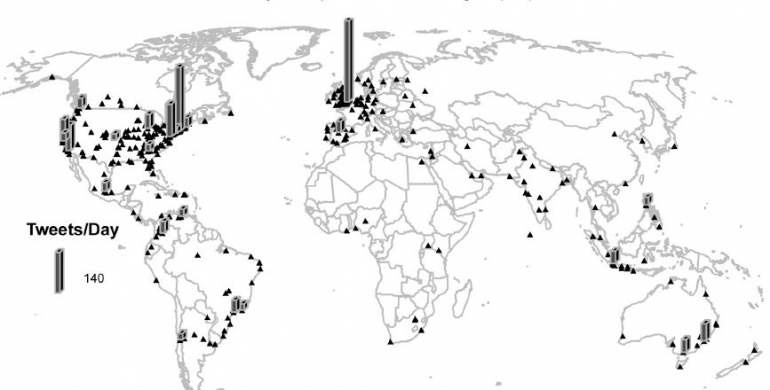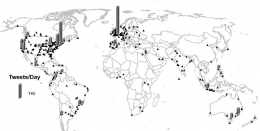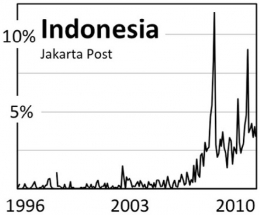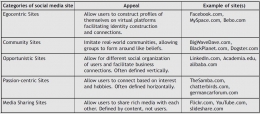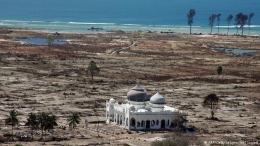Indonesia is prone to tsunami; from local to giant tsunami. The giant tsunami hit Aceh on December 26, 2004. It's estimated quarter of a million people around the Indian Ocean region was dead. The arrival time of local tsunami is very short, between 10-60 minutes (the golden times) that makes the tsunami early warning information dissemination becomes challenging. This will have a direct impact on evacuation procedures and evacuation time which is very short.
Figure 1: Photo documentation of the Rahmatulloh masjid building and surrounding affected by the Giant Aceh tsunami
Source: AFP (2004)
Figure 2: The writer’s inside Rahmatulloh masjid at Lhok Nga district
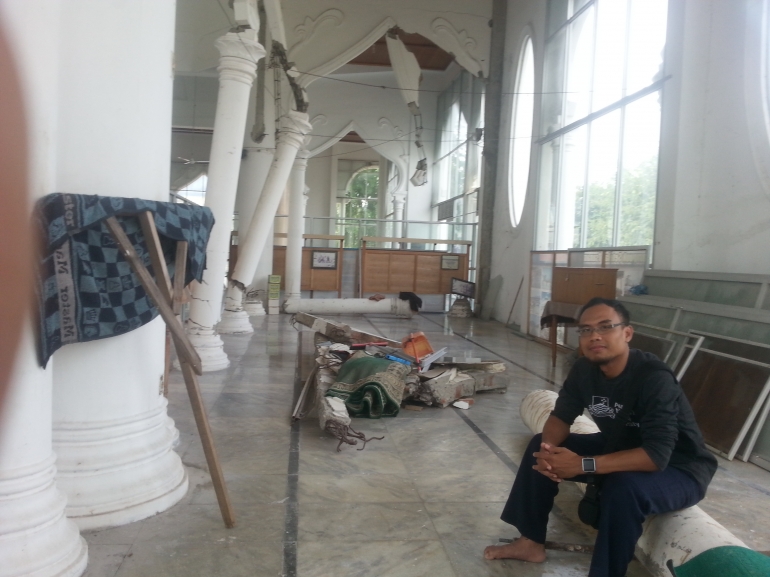
Based on this fact, the Indonesian Agency for Meteorology, Climatology and Geophysics (BMKG) the official agency who has responsibility to disseminate climate change, earthquake and tsunami warning in Indonesia, developed the Indonesia Tsunami Early Warning System (InaTEWS) uses social media to maximize public safety. One of them is using twitter. BMKG’s twitter account through the social networking @infoBMKG has exceeded 3 million followers since officially launched on February 2014 to disseminate climate change, earthquake and tsunami information (Adrianto, 2017).
Figure 3: The official BMKG’s twitter account
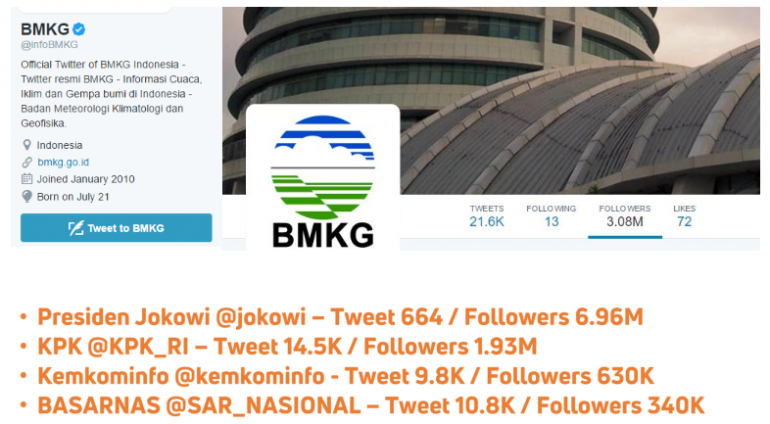
Availability and ease of public access to this information service, not only to answer the challenges of mitigation, but also can be used for public education. Social media is utilised also to raise awareness and community preparedness for a potential disaster and public engagement in Indonesia. Kirilenko and Stepchenkova (2014) found that in Jakarta at least issue of climate change is tweeted 20 times per day. From figure 4, the triangle symbol represents a tweet value at least one tweet per day. The bar represents tweet over 20 times per day.
Figure 4: The number of tweeting on climate change issue
